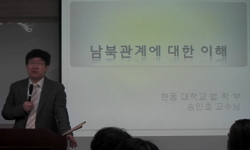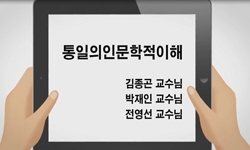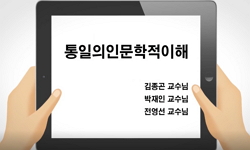본 연구는 중국과 대만의 양안분단관계를 상호협상소통기제를 중심으로 분석하고, 그러한 양안의 분단관계를 관리하는 협상소통기제가 남북한과 같은 분단국가의 상호 관계관리를 위한 기...
http://chineseinput.net/에서 pinyin(병음)방식으로 중국어를 변환할 수 있습니다.
변환된 중국어를 복사하여 사용하시면 됩니다.
- 中文 을 입력하시려면 zhongwen을 입력하시고 space를누르시면됩니다.
- 北京 을 입력하시려면 beijing을 입력하시고 space를 누르시면 됩니다.
중국과 대만의 협상소통기제 연구 : 남북한 관계에 주는 함의 = A Study on Mechanism of Negotiation and Communication between China and Taiwan : Focusing on Its Implications for South-North Korean Relations
한글로보기부가정보
국문 초록 (Abstract)
본 연구는 중국과 대만의 양안분단관계를 상호협상소통기제를 중심으로 분석하고, 그러한 양안의 분단관계를 관리하는 협상소통기제가 남북한과 같은 분단국가의 상호 관계관리를 위한 기제로서 이론적으로 혹은 정책적으로 의미가 있는지를 분석하는 것이다. 본 연구의 필요성은 4가지로 정리할 수가 있다. 첫째는 대만해협양안모델이 분단국가통합 연구이론개발의 실증사례로 가치가 있기 때문이며; 둘째는 남북한 관계의 비교연구사례로 연구가 필요한 것이며; 셋째는 한국의 대외전략에 밀접하게 영향을 미치는 중국문제의 하나로서 연구가 필요하며; 마지막으로 양안 관계의 국내연구가 상대적으로 부족하다는 이유 때문이다.
본 연구에서는 메커니즘(기제)의 관점을 도입하여, 대만해협양안의 분단관계 관리기제와 협상소통기제 발전과정을 역사분석과 문헌분석과 사례연구 방법으로 분석하고, 그 결과를 남북한 관계와 비교하여, 귀납적 방법으로 하나의 모델화하는 연구방법과 분석체계를 취하고 있다. 즉, ‘양안 관계모델’과 ‘양안협상소통기제모델’이 가능한지 분석 평가하고, 이를 남북한 관계와 비교함으로서, 그것이 분단국가의 분단관계를 관리하는 기제로서 이론적으로 정책적으로 유효한 것인가를 분석하고 있다 본 연구를 통해서 도출한 결론은 다음과 같다.
(1) 양안 관계의 가장 큰 특징은 양안 사이 여전히 매우 심각한 정치적 쟁점에도 불구하고, 상호교류협력하면서 협상소통하는 기제를 단계적으로 발전시켰다는 점이다. 중국의 ‘一國兩制’(일국양제), 정치쟁점을 피하고자 합의한 ‘九二共識’)92공식)이라는 정치적 공감대, 민간단체 사이의 ‘兩岸兩會’(양안양회, 海基會 와 海協會) 및 兩岸事務首長會議(양안사무수장회의), 각종 정당간 협상소통기제와 같은 협상조직기제의 제도화가 그러한 기제들이다. (2) 양안은 ‘先(선)교류협력 後(후)제도절차합의’하는 방식으로 점진적이고 내외환경의 변화를 적절하게 반영하는 상호 관계 접근법과 분단관계 관리기제를 성공적으로 구축하였다. 남북한의 ‘선제도절차합의 후교류협력’이 접근법과 분명하게 비교되는 기제로서 남북한과 양안 사이의 교류협력성과를 비교하면 실증적으로 양안 분단관계 관리기제의 성공적 운영을 확인할 수가 있다. (3) 분단관계에서 교류협력과 통합과정을 진행하기 위해서는 정치지도자의 정치적 결단과 정치경제체제 개방 및 다원화가 동시에 진행되어야 한다는 것이 양안 관계발전의 또 다른 성공적 요인이다. 중국의 鄧小平(등소평)과 대만의 蔣經國(장경국)총통이 내적 외적 개혁개방을 추진하면서 양안 관계를 평화적 안정적으로 발전시키는 양안 관계의 패러다임 전환에 결정적인 역할을 했다. (4) 현재 양안 관계에서 교류협력관계의 발전에도 불구하고, 통합추세에 반하는 ‘현상유지’ 추구와 ‘대만독립’에 대한 선호도가 대만민중들 사이에 오히려 증가하고 있는 것은 신기능주의 통합이론이 가장 중시하는 ‘확산효과’와 배치되는 현상이다. 이는 통합이론의 한계를 보여주는 현상으로 더 심도 있는 이론적 탐구가 필요한 부분이다.
양안 관계는 남북한 관계와 비교할 때, 협상소통기제를 포함한 분단관계 관리기제를 성공적으로 정착시켜, 평화적으로 상호교류협력하면서 점진적 통합과정으로 진행할 수 있는 성과가 실질적으로 보여주고 있다. 결론적으로 메커니즘(기제)의 관점에서 보면, 양안의 분단관계 관리기제와 그 중에서도 협상소통기제는 성공적으로 제도화한 것이기에, 그것을 하나의 모델로 이론화하는 것도 가능할 것이다. 하지만, 양안 관계 관리기제의 제도화과정에서 대만에서 독립운동과 중국의 ‘一國兩制’로 인한 정치적 쟁점은 큰 걸림돌로 작용할 수가 있다는 것도 명확하게 보여준다. 그것은 양안 관계모델의 한계이자 이념체제로 분단된 국가의 통합과정의 핵심 문제점이기도 하다. 남북한 분단관계 관계관리와 협상소통기제의 발전을 위해서, 그러한 양안 관계 관리기제와 협상소통기제는 여러 가지 측면에서 비교 연구할 가치가 있다.
다국어 초록 (Multilingual Abstract)
While transforming their lack of relations during the Cold War into a framework of exchange and cooperation, China and Taiwan have quite successfully developed a system of organization, legal norms, and negotiation and communication mechanisms. Theref...
While transforming their lack of relations during the Cold War into a framework of exchange and cooperation, China and Taiwan have quite successfully developed a system of organization, legal norms, and negotiation and communication mechanisms. Therefore, this study analyzes characteristics of mutual relations between China and Taiwan in the Taiwan Strait, and here, a model for managing divided national relations through mutual negotiation and communication is defined as the “Cross-Taiwan Strait bilateral relations model.”
This study’s necessity can be summarized in four ways. First, the Cross-Taiwan Strait bilateral relation model is valuable as development and application of research theory for divided nations’ integration. Second, the study is necessary for comparing inter-Korean relations because, in this case, both sides have successfully developed mechanisms to manage mutual exchange and cooperation. Third, because it closely affects Korea’s foreign strategy, China’s unification problem requires accurate understanding. Finally, domestic studies of Cross-Taiwan Strait relations are relatively insufficient.
The study’s main contents are as follows. First, it analyzes how both sides of the Taiwan Strait developed an organizational system for mutual relations management, negotiation, and communication. Second, the study traces the transformation process by analyzing how Taiwan and China developed their negotiation and communication mechanism. Third, based on previous analytical results, the study summarizes and names the “Cross-Taiwan Strait bilateral relation model” for managing divided national relations with its defined negotiation and communication management mechanism. Because the model was intended for integrating divided nations, this study also analyzes its characteristics in comparison with integration theory. Finally, the study discusses whether this model, along with its negotiation and communication management mechanism, can be applied to inter-Korean relations.
The study’s analytical method includes historical analysis, literary analysis, and case study; then, using the inductive method, it defines the model. This is appropriate because other theoretical methods, such as functionalism, neo-functionalism, communication theory, federalism, and even Constructivism or institutionalism, fail to present an objective, quantified theoretical analysis methodology that solves divided nations’ problems. However, theorizing the “Cross-Taiwan Strait relations” and the “Cross-Taiwan Strait negotiation communication mechanism” models is possible by analyzing the integration process’s characteristics in the Taiwan Strait, a research methodology or divisional relations management paradigm can be established.
Except for theses and published research books, the study’s research data can be located through various Internet networks. Because both Taiwan and China are fully disclosing their policies and materials, collecting data presents no major problems.
Potential conclusions to be drawn from this study are as follows:
(1) Of the Cross-Taiwan Strait relations model and the Cross-Taiwan Strait negotiation communication mechanism model, the main features are that despite very serious political issues between the Taiwan and China, they successfully developed a mechanism for mutually cooperating, negotiating, and communicating. For example, China's unification policy of “one country, two systems (一國兩制),” “the 1992 Consensus (九二共識)” to adhere to the one-China principle and to oppose “Taiwan independence(臺獨)” functioned as political discourse to develop bilateral relations while avoiding Chinese sovereignty’s political issues. Furthermore, negotiation mechanisms between two non-governmental organizations—the Straits Exchange Foundation (SEF, 海峡交流基金会) and the Association for Relations Across the Taiwan Straits (ARATS, 海峡两岸关系协会), generally called the conference of two organizations across the Taiwan Strait (两岸两会)—minimized political conflicts and barriers by serving as an institutionalized negotiation mechanism.
(2) Like inter-Korean relations, the prefect governmental initiative and the federalist approach of “exchange and cooperation after establishment of the pre-emptive consultation” in divided-relations management have limits as a reverse process of political factors in managing the politically very weak, divided system . The inter-Korean relations demonstrate this. Therefore, in comparison with the success of the Cross-Taiwan Strait relations model, the two Koreas should seriously consider a mutual relations management mechanism and transition to a paradigm that can manage it.
(3) The situation of division is very sensitive, and political conflicts exist. Therefore, leaders’ political decisions and the opening and diversification of the political and economic system should be concurrently implemented for the establishment and development of a mutual-division management system. China’s Deng Xiaoping (鄧小平) and Taiwanese president Chiang Ching-kuo (蔣經國) played crucial roles in establishing a negotiation mechanism and developing a paradigm for the stable development of relations by pursuing political determination, reform, and openness. Likewise, the pursuit of “maintaining the status quo” and the “Taiwan independence claim,” contrary to the current consolidation trend, was a problem of the Chinese Communist party’s political dictatorship, the limits of political power, and the leaders’ determination to lead integration rather than competition. This phenomenon contradicts the “diffusion (spillover) effect”—functionalist unification theory’s most important and increasingly arising effect.
In conclusion, the Cross-Taiwan Strait relations model and its negotiation and communication mechanism still have various problems. Moreover, avoiding political issues between the two parties has limitations, and this constitutes the divided relations’ greatest contradiction. However, based on this study’s viewpoint of the mechanism, clearly, their organizational system and operating principles, their negotiation communication mechanism, and their exchange and cooperation performance are comparatively successful cases. In particular, China and Taiwan’s relations through the Cross-Taiwan Strait relations model, when compared with inter-Korean relations, have clearly and empirically proved successful as a mechanism of peaceful coexistence and integration. Therefore, the model of the Cross-Taiwan Strait negotiation and communication management mechanism is worthy of emulation, in various ways, for restoration and development of mutual relations management, negotiation, and communication between the divided Koreas.
다국어 초록 (Multilingual Abstract)
本研究以两岸协商沟通机制为中心对中国和台湾的两岸关系管理机制进行分析,并进一步探讨了这种具有两岸特色的协商&#...
本研究以两岸协商沟通机制为中心对中国和台湾的两岸关系管理机制进行分析,并进一步探讨了这种具有两岸特色的协商沟通机制对于像南北韩这样的分裂国家的互动关系管理机制和协商沟通机制的建立和运作上给予理论和政策上的意义。在本文中,从历史分析,文献分析,以及案例研究的方法对台湾海峡两岸关系互动的管理机制和协商沟通机制的进行分析,以归纳出了两岸关系管理机制和协商疏通机制的特征,再与南北韩关系进行比较分析,论证了“两岸关系模式”或“两岸协商沟通模式”在理论上政策上给予南北韩关系的含义,通过本研究得出的结论如下:
第一、“两岸关系模式”或“两岸协商沟通模式”的第一个特点是两岸虽然在政治上比如对于中国主权有关的“一个中国”问题有非常大的矛盾,但是双方协商的方式解决了在互动交流当中“一个中国”的政治争论的处理方式。两岸当局为了两岸事务性功能性的交流合作关系的顺利发展,在1992年交涉而达到了所谓的“九二共识”,以“一中各表”的方式解决了在事务性交流或在相互协商当中的“一个中国”争论问题。而且,两岸建构了以民间团体形式的“两岸两会”(海基会和海协会)的协商沟通和业务处理机制,以及“两岸事务首长会议”等官方谈判联系的沟通机制,以其运作来成功发展了目前两岸合作交流关系的新模式。
第二、“两岸关系模式”或“两岸协商沟通模式”的另一个特点,就是两岸采用功能主义方式的以“先决定交流合作,后两岸协议”的政策和协商互动模式,以有序渐进的方式实现了目前日常化或制度化的两岸互动交流关系。那种与过去南北韩常用的联邦主义方式的“先南北协议,后交流合作”的模式正相反的两岸关系的互动模式却产生了成功的两岸交流的数据,并且在互动过程当中建立了两岸特色的协商沟通的机制。从其结果来看,南北韩到目前为止连人道交流如书信和通信来往还没法疏通,而且处于政治军事上持续进行非常激烈的冲突的局面,南北韩失败了建立协商沟通机制,两岸则大为不同,成功建立了新协商沟通和互动交流机制。
第三、两岸和南北韩一样以意识形态来形成为分裂的国家,于是双边关系上有着非常严重的政治对立和安全困境问题。过去三十年两岸关系发展和变化实证了,若打破这个困境,需要的是如新功能主义整合理论主张的政治领导的决断以及其体制的改革开放和多元化措施。中国的邓小平领导了经济改革开放以及两岸的关系的交流沟通的政策,台湾的蒋经国总统也发挥了领导之术成功进行了台湾的政治革新并且决定了“开放大陆探亲”的政策措施。邓小平和蒋经国两位领导的其对内改革开放同时采取的对两岸关系开放决策,从以后两岸关系的发展来看,确实带来了两岸探索两岸新互动并转移新典范时代的机会,而且以来树立有利的两岸关系发展的和平环境,开启了两岸关系的新时代。
第四。过去三十年的两岸关系与南北韩关系不同,不仅有交流合作的非常大的成果,而且不断完善管理分裂关系的互动机制包括协商沟通机制。但是从整合理论的一些观点来看,其整合之路上还存在着不少的问题。如台湾的民众舆论调查显示台湾民众对于两岸交流趋势虽然保持高度评价赞成的态度,但是两岸关系要持续“维持现状”的去向,在过去三十年两岸交流关系的发展当中反而增加并没有减少,而且在2016年事实上认同“台独”的民进党也得到台湾民众的压倒性的支持而执政了。这是与功能主义的整合理论中最重视的“扩散效果”的背道而驰的现象。台湾民众的舆论反映着这种现象的主要原因与台湾民众对于中国大陆共产党一党专政的政治体制的无法信赖的态度有非常密切关系。两岸交流了三十年还是无法信赖对方政治体制和政府行为,是两岸整合的最大的困局,也是未来南北韩在交流整合过程中可能要面临的非常严重的困境。中国政府为了减少这种以政治体制或制度引起两岸关系的困境,之所以提出了“一国两制”的中国统一战略,但是目前台湾民众的舆论趋势来看,这个“一国两制”在交流互动的过程当中会发挥非常好的其功能,但若谈到两岸整合的高度阶段,却难以保证其功能效果。再说,虽然“一国两制”有助于发展两岸关系互动交流机制的建立,但再发展上一台阶的两岸整合,取决于这种政治体制的差别而引起的政治互信问题如何处理上面。在香港的“一国两制”上面已经出现了这种政治体制的困境。于是,可以说两岸的互动模式和协商沟通机制,一边给予南北韩以取经如何突破目前隔绝紧张关系的一个方案或模式,同时留给予南北韩审视那种以功能主义理论难以解说的在两岸交流当中出现“负扩散效果”问题的机会,这就是两岸协商沟通机制的研究给予南北韩关系的非常重要的含义。
목차 (Table of Contents)
- 국문요약 = 7
- 제1장 서 론 = 1
- 제1절 연구 목적과 필요성 = 1
- 1. 연구 목적 = 1
- 2. 연구 필요성 = 6
- 국문요약 = 7
- 제1장 서 론 = 1
- 제1절 연구 목적과 필요성 = 1
- 1. 연구 목적 = 1
- 2. 연구 필요성 = 6
- 제2절 연구 방법과 이론문제 = 16
- 1. 선행 연구현황 = 16
- 2. 연구 방법 = 23
- 제2장 중국과 대만의 분단관계와 통합과정: 이론적 접근 = 41
- 제1절 중국과 대만의 분단관계 특색 = 41
- 1. 중국과 대만의 분단관계 변화 = 41
- 2. 중국과 대만의 분단관계 관점 = 47
- 3. 중국과 대만의 교류협력 현황 = 56
- 제2절 중국과 대만의 통합과정: 이론적 접근 = 61
- 1. 중국과 대만의 통합과정 진행의 이론적 평가 = 61
- 2. 중국과 대만의 통합과정 진행의 특징 = 77
- 3. 중국과 대만의 통합과정 진행의 모델화 가능성 평가 = 99
- 제3장 중국과 대만의 분단관계 관리와 협상소통 조직체계 = 111
- 제1절 중국과 대만의 ‘양안양회’ 이전 접촉담판 = 111
- 1. 중국과 대만의 접촉담판의 시작 = 111
- 2. 중국과 대만의 적십자사 ‘금문담판’의 성공 = 121
- 제2절 중국과 대만의 분단관계 관리와 협상소통조직체계 = 129
- 1. 중국의 양안 관계 관리와 협상소통조직체제 = 129
- 2. 대만의 양안 관계 관리와 협상소통조직체계 = 150
- 3. 소통기제로서 ‘양안양회’ 협상조직체계 구축 = 160
- 제4장 중국과 대만의 ‘양안양회’ 협상소통기제의 수립과 운영 = 171
- 제1절 중국과 대만의 ‘양안양회’ 협상소통기제의 기능화 = 171
- 1. ‘양안양회’의 공식적 접촉 대화 시작 = 171
- 2. ‘양안양회’의 협상소통기제 기능화 과정 = 177
- 3. ‘양안양회’의 협상소통기제 정치원칙처리 타협: ‘92공식’ = 183
- 4. ‘양안양회’의 제도화 협상소통시대 진입: ‘왕고회담’ = 186
- 제2절 중국과 대만의 ‘양안양회’ 협상소통기제와 정치적 갈등 = 195
- 1. ‘왕고회담’ 후속협상과 정치적 갈등 = 195
- 2. 대만의 ‘특수양국론’과 대만독립노선의 문제 = 205
- 3. 중국의 《반분열국가법》과 양안 정치적 갈등 = 210
- 제3절 중국과 대만의 민간교류 확대와 협상소통기제 다원화 = 214
- 1. 양안 정치적 갈등 속에 민간교류의 지속적 성장 = 214
- 2. 중국과 대만의 先(선)정책 後(후)개방 방식의 ‘소삼통’ 실현 = 218
- 3. ‘설날전세기담판’의 민간협상: ‘마카오모델’ = 221
- 제5장 중국과 대만의 협상소통기제 다원화와 제도화 = 227
- 제1절 중국과 대만의 정당 간 협상소통기제 제도화 = 227
- 1. 대만 정당 대표단들의 중국대륙 공식방문 = 227
- 2. 대만 정당들과 중국공산당의 협상소통기제 제도화 = 233
- 3. 대만 민주진보당의 중국대륙과 접촉과 한계 = 245
- 제2절 중국과 대만의 ‘양안양회’ 협상소통기제의 회복과 활성화 = 252
- 1. 대만의 중국국민당 재집권 후 중국공산당과 적극적 소통 = 252
- 2. ‘양안양회’ 협상소통기제 회복과 각종 협의서 체결 = 261
- 3. ‘양안양회’의 각종 협의서 체결 성과 = 266
- 4. ‘양안양회’의 업무성과 평가기제와 사무기구 설치문제 = 274
- 제3절 중국과 대만의 정부 간 협상소통기제의 제도화 = 280
- 1. 중국과 대만의 정부 간 ‘양안사무수장회의’ 제도화 = 280
- 2. 중국과 대만의 최고영도자회담 개최 = 293
- 3. 대만 민주진보당 재집권과 양안 협상소통기제 문제 = 307
- 제4절 중국과 대만의 협상소통기제의 특징 = 313
- 1. 중국과 대만의 협상소통 조직체계의 특징 = 313
- 2. 중국과 대만의 협상소통에서 정치원칙 처리의 특색 = 317
- 3. 중국과 대만의 협의서 체결과정과 이행과정의 특징 = 329
- 제6장 중국과 대만의 협상소통기제가 남북한 관계에 주는 함의 = 343
- 제1절 중국과 대만의 양안 관계와 남북한 관계의 비교 = 343
- 1. 양안 관계와 남북한 관계: 분단관계의 비교 = 343
- 2. 양안 관계와 남북한 관계: 상호 교류협력 현황의 비교 = 350
- 3. 양안 관계와 남북한 관계: ‘통합 응집력’과 통합과정의 비교 = 354
- 제2절 남북한 협상소통기제 수립과 제도화 실패 = 362
- 1. 남북한 분단관계 실질적 관리기제: 《정전협정》 = 362
- 2. 남북한 새로운 협상소통기제 수립과 제도화 실패 = 370
- 3. 개성공업지구 남북한 협력관리와 협상소통기제 한계 = 391
- 제3절. 중국과 대만의 양안과 남북한 협상소통기제 비교 = 401
- 1. 양안과 남북한: 협상소통 관리조직체계의 비교 = 401
- 2. 양안과 남북한: 협상소통과정의 정치원칙처리 비교 = 413
- 3. 양안과 남북한: 협의서 체결과정과 이행과정의 비교 = 424
- 4. 양안 협상소통기제가 남북한 관계에 주는 함의 = 430
- 제7장 결 론 = 455
- 참 고 문 헌 = 463
- 부 록 = 479
- 【부록-1】 양안 ‘양안양회’ 전부 회담 목록 = 479
- 【부록-2】 양안 사이에 체결한 전부 협의서(비망록 포함) 목록 = 480
- 【부록-3】 양안 주요 협의서 및 법규 한글번역 = 481
- 【부록-4】 본문에 인용한 주요 조직 명칭 한글번역 = 484
- 【부록-5】 《海峽兩岸關系協會章程》(해협양안 관계협회장정) = 485
- 【부록-6】 《海峽交流基金會捐助暨組織章程》(해협교류기금회기부와 조직장정) = 486
- 【부록-7】 《反分裂國家法》(반분열국가법) = 488
- 【부록-8】 《臺灣地區與大陸地區人民關係條例》(대만지구와 대륙지구 인민관계조례) = 489
- 【부록-9】 《남북교류협력에 관한 법률》 = 508
- 【부록-10】 《남북한 관계발전에 관한 법률》 = 516
- Abstract = 519
- 論文摘要 = 524













